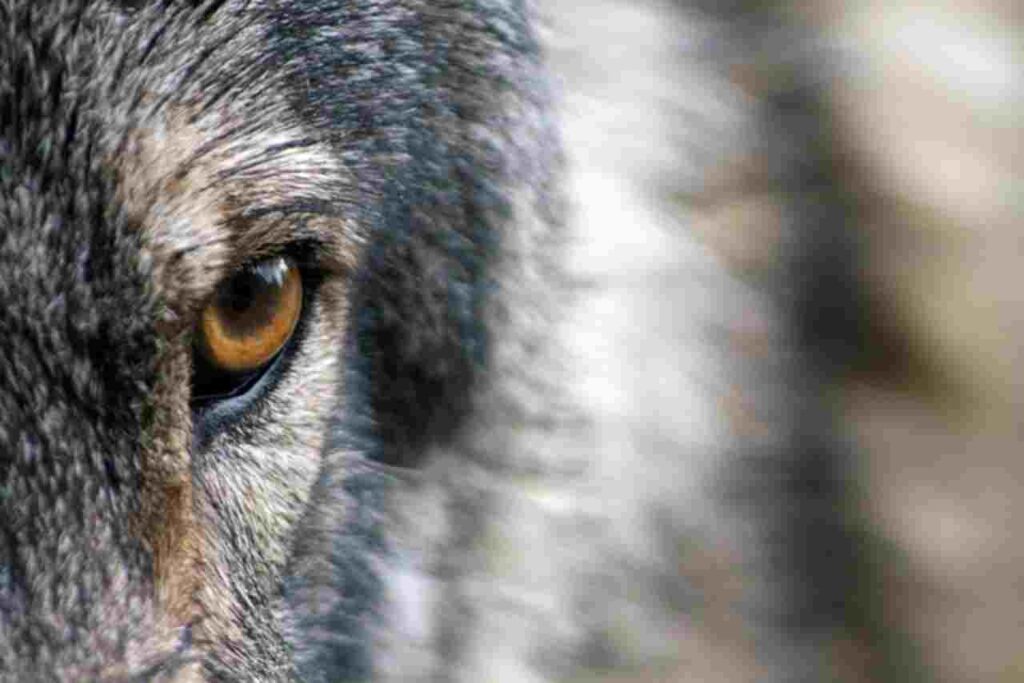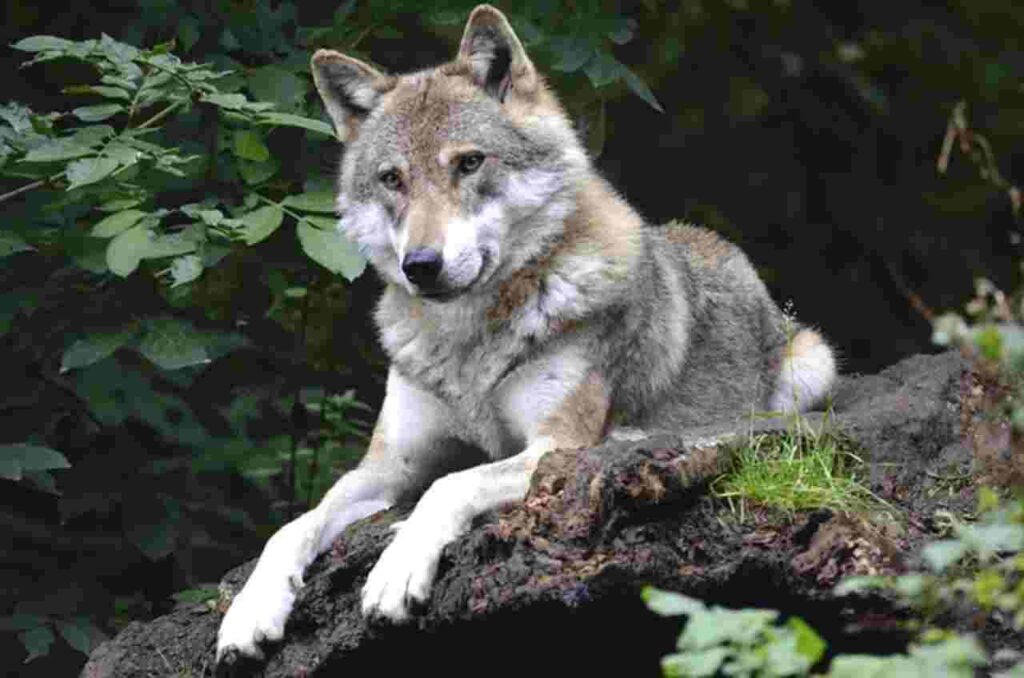Wolf: Nature is a delicate stability of interdependent relationships, in which even the most minor trade can trigger a chain reaction. One fantastic example of this phenomenon is the story of ways the reintroduction of a single wolf into an ecosystem led to the revival of a whole woodland. This powerful narrative showcases the intricate connections between species and highlights predators’ vital role in maintaining ecological harmony.
Here we discuss
The Wolves Return:
Within the mid-nineties, Yellowstone Country Park in the USA. I confronted a good-sized undertaking. The absence of wolves because of human hobbies had disrupted the herbal order of the atmosphere. Elk populations have been thriving without natural predators, mainly due to the overgrazing of plants, erosion of riverbanks, and a decline in different species. The atmosphere was unbalanced, and the fitness of the whole landscape was in jeopardy.
To repair the atmosphere’s equilibrium, wolves have been reintroduced to Yellowstone in 1995. The impact in their go-back turned into nothing brief or remarkable, demonstrating a pinnacle predator’s profound effect on surroundings.
A Cascade of Effects:

The reintroduction of wolves had far-reaching effects that rippled through the ecosystem:
1. Predator-Prey Balance:
With wolves as natural predators, elk populations could no longer overgraze vegetation near rivers. This allowed the growth of willow and aspen trees, providing habitat and food for numerous other species.
2. Vegetation Regrowth:
The increase in vegetation along riverbanks stabilized the soil, preventing erosion. This positively impacted aquatic ecosystems by maintaining water quality and providing habitats for fish and other marine organisms.
3. Bird and Insect Presence:
The growth of vegetation attracted a greater variety of bird species and insects, leading to a more diverse and healthier ecosystem.
4. Beaver Recovery:
As the landscape transformed, beavers returned to build dams in the newly restored river areas. These dams further altered the environment, creating wetlands and pools that support even more wildlife.
5. Predator-Mediated Fear:
Wolves also influence the behavior of their prey. The fear of predation caused elk to avoid certain areas, allowing plant life to recover in those regions.
Lessons Learned:
The story of Yellowstone’s ecosystem recovery teaches us valuable lessons:
1. Keystone Species:
Wolves are an example of a keystone species with a disproportionately large impact on its ecosystem relative to its abundance. Their presence or absence can significantly influence biodiversity and ecosystem health.
2. Ecological Balance:
The story underscores the importance of preserving natural predator-prey relationships. When predators are removed, ecosystems can become imbalanced, affecting multiple species.
3. Complex Interconnections:
Ecosystems are intricate networks of interdependent species. Changes in one element can trigger a domino effect, impacting the entire environment.
4. Ecosystem Restoration:
Introducing or reintroducing key species can aid in restoring ecosystems that have been disrupted by human activity.
The Power of a Single Wolf:

The revival of Yellowstone’s ecosystem serves as a testament to the resilience of nature and the transformative power of a single species. It illustrates the capacity of predators to shape entire landscapes and underscores the importance of preserving biodiversity and natural processes.
The tale of how a single wolf helped repair an entire woodland’s surroundings is a compelling reminder that every species, irrespective of how seemingly insignificant, performs a critical role in keeping the sensitive stability of nature. It highlights the profound impact that even small moves will have on the health and Sustainability of our planet’s ecosystems.
In a global wherein the renovation of biodiversity is paramount, this narrative resonates as a call to movement. As stewards of the Earth, we’re entrusted with the duty to shield and nurture the elaborate web of lifestyles that sustains us all.
Safeguarding Our Natural Heritage:
The tale of the wolf’s role in Yellowstone’s resurgence carries significant implications for conservation efforts and the preservation of our natural heritage:
1. Biodiversity Conservation:
The story emphasizes the need to protect individual species and the complex interactions that define ecosystems. Preserving biodiversity safeguards the health and resilience of these ecosystems.
2. Ecosystem Management:
Reintroducing a keystone species like the wolf showcases the potential for targeted management strategies to restore ecosystems disrupted by human activities.
3. Holistic Approach:
Conservation efforts should take a holistic approach, considering the broader ecosystem and its intricate connections. Protecting a single species can trigger a cascade of effects that benefit numerous others.
4. Educational Value:
The story of the wolf’s impact is an educational tool, demonstrating the intricate relationships that shape the natural world. It encourages a deeper understanding of the importance of predators and biodiversity.
5. Global Application:
While the Yellowstone example is localized, its lessons are relevant on a global scale. Ecosystems worldwide are interconnected, and the reintroduction of key species can have similar positive outcomes.
Individual Responsibility and Collective Action:
As stewards of the planet, individuals and communities have a vital role to play in safeguarding the environment:
1. Support Conservation Efforts:
By supporting conservation organizations, you contribute to the protection of species and ecosystems around the world.
2. Promote Sustainability:
Make sustainable choices in your daily life, from reducing waste to supporting sustainable agriculture and responsible consumption.
3. Advocate for Change:
Use your voice to advocate for policies that prioritize environmental protection, conservation, and the preservation of biodiversity.
4. Educate and Raise Awareness:
Share stories like the wolf’s impact to raise Awareness about the importance of biodiversity and the role humans play in maintaining ecological balance.
5. Engage in Restoration:
Participate in local habitat restoration projects or community initiatives that aim to reintroduce native species and restore disrupted ecosystems.
A Legacy of Renewal:
The story of the wolf’s profound impact on Yellowstone’s atmosphere illustrates the capability for tremendous trade while human beings take accountable action. It demonstrates that even in the face of environmentally demanding situations, we can restore balance and rejuvenate the herbal international.
As we navigate a generation of heightened problems for our planet’s fitness, the instructions from Yellowstone’s revitalization preserve unique importance. They remind us that our moves can form the destiny of our ecosystems and that each attempt, regardless of how small, contributes to a legacy of renewal.
Within the grand tapestry of Earth’s interconnected existence, the story of the wolf and the forest environment stands as a testimony to the superpower of nature’s resilience and the capability of humans to be catalysts for a beautiful exchange. By embracing our function as caretakers of the environment, we ensure that the delicate harmony of our planet continues to flourish for generations to come.
Inspiration for Future Generations:
The revival of Yellowstone’s atmosphere via the reintroduction of a single wolf is not only a medical marvel; it’s a tale of wish and proposal for future generations. It underscores the concept that each person and each species has a position to play in preserving the tricky internet of lifestyles on our planet.
A Call to Harmony:
In an international in which human sports have frequently disrupted the delicate balance of nature, the narrative of the wolf’s effect serves as a call to repair harmony. It reminds us that maintaining biodiversity and protecting natural methods are critical for the well-being of all residing beings.
A Blueprint for Conservation:
The restoration of Yellowstone’s ecosystem offers a blueprint for conservation efforts worldwide. It showcases the significance of understanding ecological relationships, addressing imbalances, and collaborating to protect and restore our natural world.
Nature’s Resilience and Potential:
The story also celebrates the resilience of nature. Given the opportunity, ecosystems can rebound and thrive, showcasing nature’s incredible ability to heal and regenerate.
Guardians of Our Planet:

As we reflect on the story of the wolf and the forest, we’re reminded that we’re guardians of our planet. Our moves—large and small—can form the trajectory of ecosystems, affect biodiversity, and determine the future health of our international.
Continuing the Legacy:
The legacy of the wolf’s impact in Yellowstone continues to conform. It serves as a dwelling testament to the importance of shielding our environment and the infinite species that call it home.
As we flow forward, let us be guided by the lessons from Yellowstone—a reminder that our efforts rely on and that positive change is viable while we work in harmony with Herbal International.
Conclusion: A Story of Unity and Restoration:
The tale of ways a single wolf revitalized an entire woodland environment is a tale of harmony—the team spirit of lifestyles and the connections that bind all residing matters. It’s a story of recovery—the restoration of stability, peace, and the complex dance of nature.
In an era wherein environmentally demanding situations are pressing, and the need for conservation is paramount, the story of the wolf and the wooded area serves as a beacon of hope. It teaches us that even in the face of adversity, we will tremendously impact our planet.
As we appear to destiny, may we draw thought from the wolf’s journey. We also become champions of ecological concord, advocates for biodiversity, and guardians of the Earth’s delicate web of lifestyles. Through our actions, may we contribute to a legacy of renewal, resilience, and a world where every species thrives in its rightful place. Read more EXTINCTION: 6 AMAZING ANIMALS BROUGHT BACK FROM EXTINCTION.



